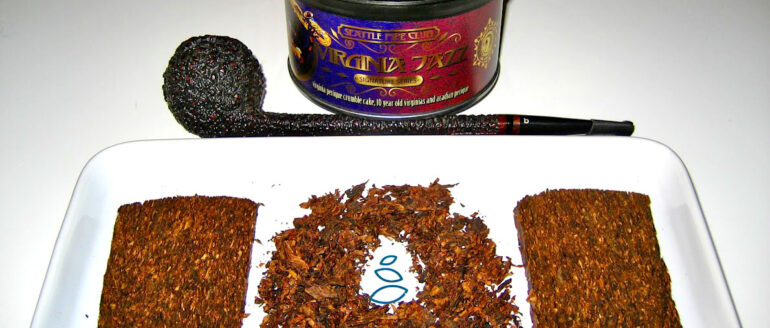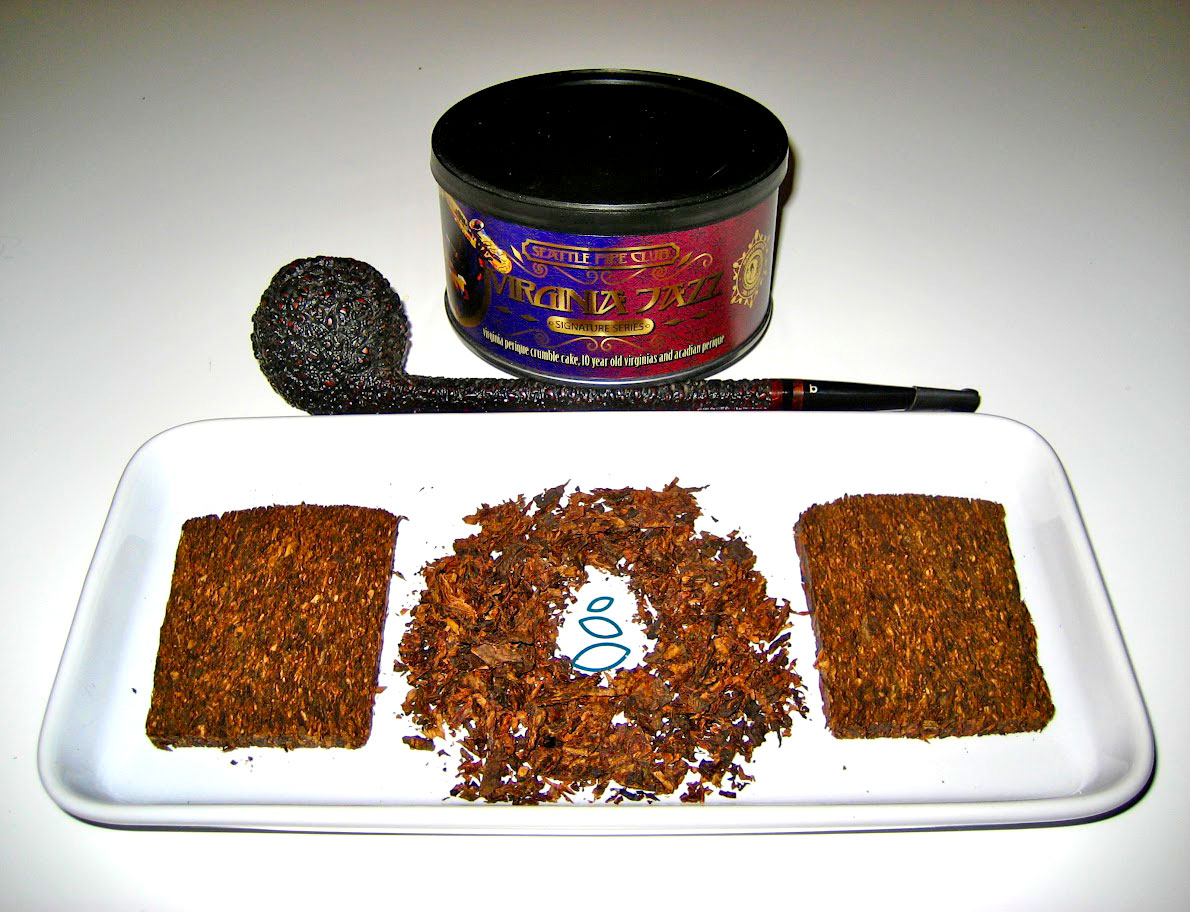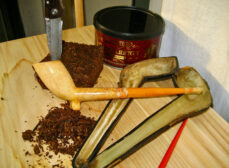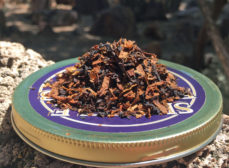
It’s spring, finally, and the city itself is in bloom. Love is in the air, sidewalks are abuzz with folks eager to shed heavy winter coats and scarves, and there’s a racy adventurous feel to it all—a fitting time to rotate to a new blend, one suited to afternoon strolls in brisk spring chills or sipping coffee on cool nights with mysterious excitement in them. As mentioned in the last installment of this column, we’ll be getting to know the most recent offering from Sutliff’s Seattle Pipe Club Signature Series: Virginia Jazz, wherein Joe Lankford’s legacy blends continue to swing on.
The chosen aural, and oral, accompaniments for testing, as directed by the tin’s ad copy, are a wide selection of era-appropriate tracks from the likes of Duke Ellington, Hoagy Carmichael, Louie Armstrong, Billie Holiday and more, along with some piping hot coffee perfect for taking the edge from a nippy spring morning—Cafe du Monde and scalded condensed milk seemed to be most appropriate. From the tin:
The 1920s Jazz Age changed America. The new music moved people. New Orleans, The Great Gatsby, prohibition, radio and a national urge to cut loose. Music and cultures mashed together. Our Virginia Perique starts with 10 year old mature red Virginias blended with a good amount of Cajun tobacco Acadian Perique. Add some tasty stoved Virginia, pressed and crumble cake cut. Virginia Jazz is an exceptional smoke and music to VaPer lovers. As Louisiana locals say, Pass a good time, cher!
The tin note upon opening is emphatically Virginian: a waft of vinegar and raisin, turned earth, parchment, and sweet wood. Inside the tin are three wafers of crumble cake tobacco roughly the size and shape of English tea biscuits, all a uniform mahogany brown. Extra points to this blend for the presentation, as the cakes are easy to cleave a smoking portion from and are of a consistent cut and humidity to break apart easily for a quick air-dry during preparation. Loading up a few grams for sampling is likewise easy as can be, just gravity fill and go. Allowing some airing time for the biscuits to breathe, the overtones of the aroma bend at first toward sawdust then an earthy mustiness which gives way to cocoa, alluding to the stoved component as well as the fermented Acadian Perique. This condiment is quite restrained within the blend, and lacks the full fruitiness of its sibling from St. James parish.
Once lit, the unassuming aromas begin to organize in much the same way a big band tunes, warms up, and falls into step with each other. The cadence of the smoke is indeed parallel to jazz of this era: a steady shuffle rhythm, a walking bassline of flavor with occasional solo flourishes of sweetness and sour; though one should take care not to puff at too frenetic a tempo—more “Blue Feeling” than “Take the A Train”, to put it in Ellingtonian terms. It begins with a standard Virginia refrain of woodsy, raisiny smoke that’s more than a little sweet around the edges, evidenced on the tip of the tongue. There is an inclination toward sharpness to this—although there’s plenty of aged leaf in it, it’s still relatively young in the tin—for after all, youth is a form of chemical madness, to paraphrase Fitzgerald. It will be interesting to circle back after a couple of years in the cellar on this one, as other crumble cakes I’ve stored have fared rather well; notably, early batches of H&H’s Anniversary Kake jarred for a decade plus. An occasional tingle in the nose once the ember is built up sufficiently announces the Acadian Perique, anxious to contribute its voice to the composition nearing mid-bowl, where it opens up a little with intimations of sweet and sour raisin and date notes. The voice is there, though not center stage, merely adding a bit of counterpoint to the otherwise steady core of the mature and stoved Virginias plodding along rhythmically to that leather and wood campfire tune. It’s modest enough that some may not even notice its inclusion, though its mildly sour tang definitely serves to color in the overall flavor of the composition. For the most part the arrangement stays steady through to the heel, evincing more of the sourdough bread and hay tones with just a hint of baker’s cocoa toward the end of the bowl.
Interestingly, most bowls ended with a remainder of dottle no matter which pipe I used. Gravitating this time toward the Canadian and Lumberman section of my toolbox, all the chambers of the pipes were nearly the same size—a bog-standard ¾” by 2”—while the shaft lengths varied between 5 ¾” to a rather egregious 7 ½”, like the Becker Canadian pictured. The tobacco never suffered from too much moisture in the heel, it simply crossed the point of diminishing returns to try to keep an ember nurtured below the last quarter of the chamber. I can only chalk it up to my technique or the weather, and it was consistent, though not an issue that would detract points in my book. A few crumbs aside, three bowls an evening coincided exquisitely with the runtime of the 1920s jazz compilations employed in the making of this article.
Overall the smoke, though uncomplicated, is quite a joy and hard to not be upbeat about—it’s a real toe-tapper with a crackerjack presentation in the crumble cakes. The sidestream smoke and room note is mild and dissipates rather quickly, not clinging to clothes or upholstery appreciably. If only we could still smoke in late-night jazz clubs, this would be the blend to bring; but alas, that age has passed.























